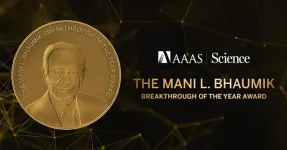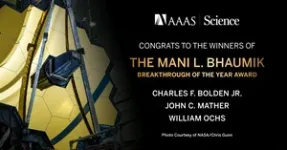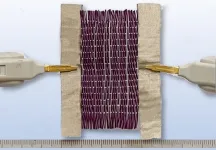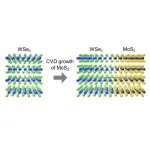The award recognizes Major General Charles Frank Bolden Jr., USMC (Ret), a former administrator of the National Aeronautics and Space Administration (NASA); John Mather, senior project scientist of the JWST since 1995; and Bill Ochs, JWST project manager from 2011 through the telescope’s launch.
The award selection committee seeks to acknowledge not only the winners’ individual contributions, but the teams they inspired, whose collective work has given us all a completely different view of the universe. Recognizing such significant scientific developments, and the people behind them, is a central philosophy for donor Mani L. Bhaumik, Ph.D. — a physicist with myriad contributions to the development of high-powered lasers — as well as for AAAS and the Science family of journals.
“The JWST’s ability to go back in time to help us see the earliest objects in the universe will dramatically increase our view of the cosmos. This is merely one of its superb capabilities. I’m thrilled to see this award go to individuals whose persistence on such a difficult but worthy scientific endeavor made it a reality,” said Bhaumik.
The Bhaumik Breakthrough of the Year Award builds upon the well-established Science Breakthrough of the Year, the journal’s choice of the top research advance of the year. In 2022, the deployment of the JWST, which first beamed images and data back to Earth in July, earned Breakthrough status. The telescope, the product of a 20-year collaboration led by NASA and with the partnership of the European and Canadian space agencies, was launched on December 25, 2021
To select just three winners whose work best exemplified the journey to bring JWST to life, the Science journals’ Editor-in-Chief Holden Thorp convened a committee.
“So many people have touched the JWST project,” said committee member Ellen Stofan, under secretary for science and research at the Smithsonian and former chief scientist at NASA. “This global collaboration exemplifies what a NASA mission is all about.”
But the sheer number of contributors to the decades-long JWST project also made selecting three winners an incredible challenge.
“We felt that we needed to represent the teamwork and various skillsets necessary to make this mission a success,” said Stofan.
The committee agreed they wanted the inaugural award to represent three key groups: the scientists, the engineers, and the leaders who advocated for the JWST mission in Congress when its status was under great threat.
“Our focus was to think less about the individual contributions and more about how an individual represented a key part of the team’s success,” said committee member Michael Moloney, CEO of the American Institute of Physics. “That isn’t to say that any of these individuals didn’t make enormous individual contributions, but that they did that in a broader context — representing the work of literally thousands of other people that led to the science we now see being done, and that will be done.”
A common theme among all three winners was their persistence.
For Bolden, a retired United States Marine Corps Major General and a former astronaut who served as administrator of NASA from 2009 to 2017, a pivotal moment came early in his tenure at NASA, in 2010, when an internal government review panel flagged major budgetary problems for JWST.
“In the face of such a situation, the easy decision would have been to cancel the mission,” said Stofan.
But Bolden — passionate about the telescope, with a deep understanding of its potential for scientific discovery — responded by elevating the telescope’s completion to an agency-wide priority and ensuring it remained one.
“He invested a great deal of his personal time and capital in working with key partners in Congress, at NASA and beyond, to maintain the agency’s support for the project,” said Moloney.
Reflecting on this time, Bolden said the importance of advocating for JWST never wavered in his mind, even when he was up against strong challengers deeply concerned about cost and time.
“This telescope was going to revolutionize our understanding of astrophysics,” said Bolden, whose enthusiasm for JWST came in part from his time as co-pilot crewmember of the mission that deployed the Hubble Space Telescope in 1990. “What we’d learn from JWST would dwarf what we’d learned from Hubble.”
During Bolden’s leadership at NASA — from 2009 to 2017 — thousands of people were key contributors to the JWST missions’ ultimate launch and deployment.
“As a winner of this award, Bolden’s representing the whole agency because so many of the key milestones in JWST’s development happened during his tenure,” said Moloney.
Among these milestones were scientific advances overseen by Mather, the telescope’s senior project scientist, who played a key role in the $10 billion project from the earliest days.
“He represents scientists who had a dream about building a telescope like this even before Hubble was launched,” said Moloney.
In his work leading the JWST science team beginning in 1995, Mather represented scientific interests to project management and helped see each step forward, no matter how small.
“We set ourselves an incredible challenge,” said Mather. “The telescope represented a very revolutionary idea and we had to invent many things.”
His work included setting up international science contests to find the best talent to invent the right instruments and technologies for the telescope, and to bring the same inventions to life.
“John was able to consistently articulate why it was so worth spending money on the JWST mission,” said Stofan. “The promise of the science, which he articulated so well, kept people going.”
“I didn’t fear we would lose support because there was no alternative to what we were doing,” said Mather. Mather is known for speaking passionately about the promise of the telescope for making observations of events and objects at sufficient distances to reveal the universe when it was less than a billion years old.
“John represents the hopes and dreams of more than a generation of scientists, and now a new generation of scientists who are working on the mission, too,” said Moloney.
For Ochs, who served as the James Webb Space Telescope project manager starting in 2011 — representing both engineering and science teams — coming onboard when he did meant confronting tough realities: an external review had just concluded the JWST wasn’t going to make its launch date.
“I had to learn this huge, complex mission and figure out a new launch estimate and cost estimate,” said Ochs.
He was very focused on the people at the center of the project.
“When I first got there, morale was down,” Ochs said. He described his approach to management —focused on efforts to bring people together to feel heard and seen. He also preferred walking around to visit people doing the work, instead of waiting for them to come to him. He believed in being a strong listener, managing with humor and building consensus.
“This mission required too many miracles,” said Stofan. “Bill knew how to listen, how to make tough decisions and how to get the team to work together to reach the finish line.”
Among the miracles he oversaw was recovery from an incident in 2016 when the telescope’s sunshield, a honeycomb array of highly smooth mirrors that unfolds in space, was evaluated in a shake test designed to mimic the rocket launch environment. At first, results looked good, but after opening the door of the shake test chamber, “there were screws, nuts and washers lying all over the floor,” said Ochs. This put the team back six months.
Moving forward from that incident, Ochs reflected on the importance of building a work culture in which people didn’t feel burdened by a deadline. He would visit people every shift, encouraging them to focus on accuracy instead of time pressure. “If you see something small, tell us now,” he’d say. “I’d rather lose 30 minutes now than six months later.”
While the pandemic ultimately slowed the engineering and science teams, the telescope was successfully launched in 2021.
“To get to that point required really robust project management,” said Moloney. “Bill was there to orchestrate all of it and make sure the orchestra was playing for the launch on Christmas Day (2021).”
“It was the best job of my career,” Ochs said.
On May 3, a live event at AAAS headquarters in Washington, D.C., will honor Ochs, Mather and Bolden. Each winner will speak about their time serving the JWST community. A link to allow remote viewing of the event, which will begin at 4 p.m. US ET, will be highlighted on AAAS’s social media channels in advance.
The cash prize each winner receives — the largest bestowed by any scientific society — is made possible by the biggest transformational gift in AAAS’s history. The $11.4 million pledge to the organization supports a $250,000 cash prize annually.
“To be able to recognize hard-working scientists with this award — and perhaps prompt even more good work — is exciting,” said donor Mani Bhaumik in a Q&A with Science last July.
Stofan said that compared to other science prizes, the Bhaumik Breakthrough of the Year Award stands poised to fill an important gap. “The problems of the future are interdisciplinary problems. They cannot be solved by one person. The way that this prize has unfolded this year — the fact that we’ve selected three people with different skillsets and who came in at different stages of the mission — shows you that you need teams and various skills and approaches to tackle problems of the future.”
“This award will help elevate scientists working in research areas most likely to benefit society whose approaches to both leadership and problem-solving represent the way forward,” said Thorp. “We hope this will inspire future team-oriented approaches to tackling major problems the world faces.”
# # #
The American Association for the Advancement of Science (AAAS) is the world’s largest general scientific society and publisher of the journal Science, as well as Science Translational Medicine; Science Signaling; a digital, open-access journal, Science Advances; Science Immunology; and Science Robotics. AAAS was founded in 1848 and includes more than 250 affiliated societies and academies of science, serving 10 million individuals. The nonprofit AAAS is open to all and fulfills its mission to “advance science and serve society” through initiatives in science policy, international programs, science education, public engagement, and more. For additional information about AAAS, visit www.aaas.org.
END




